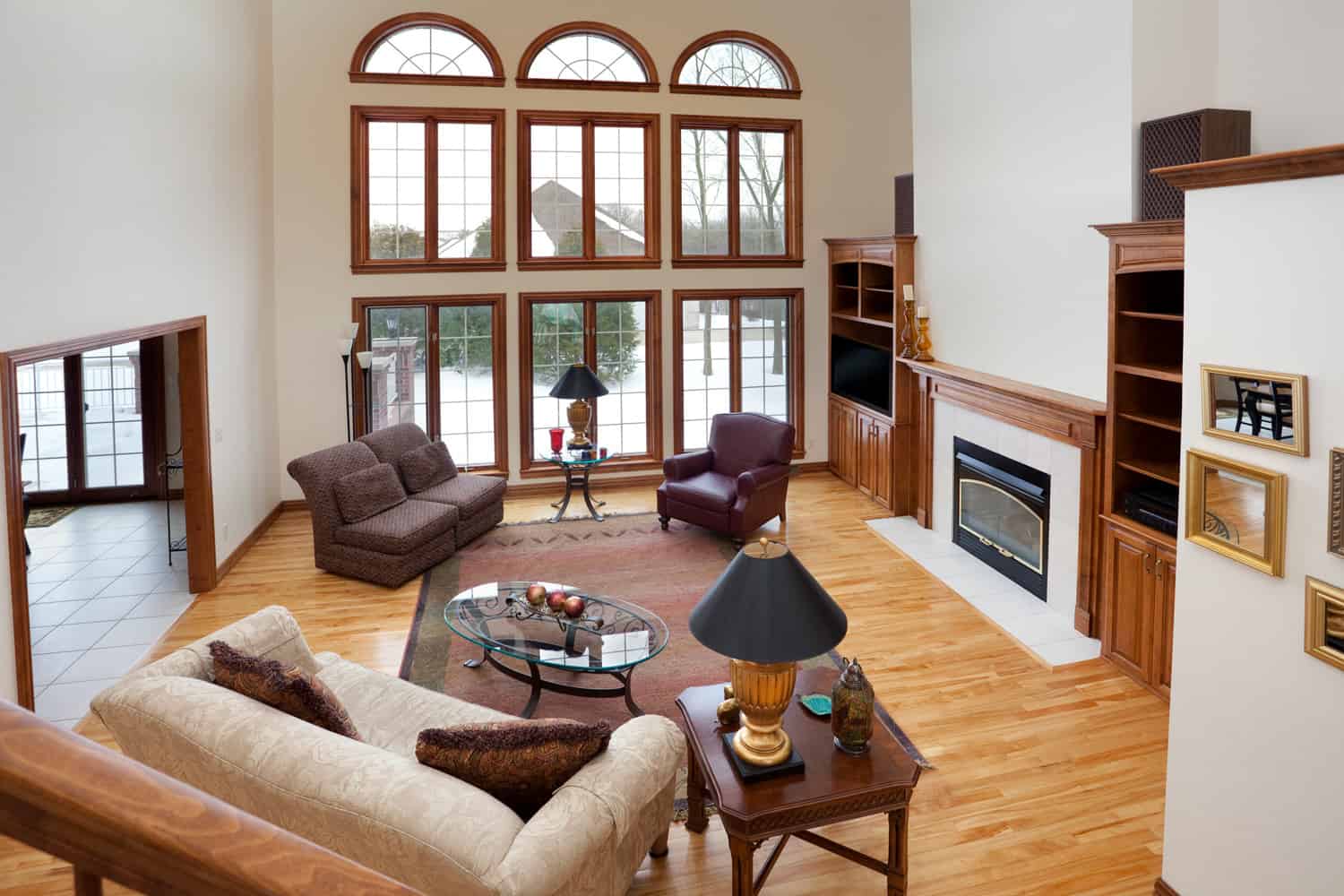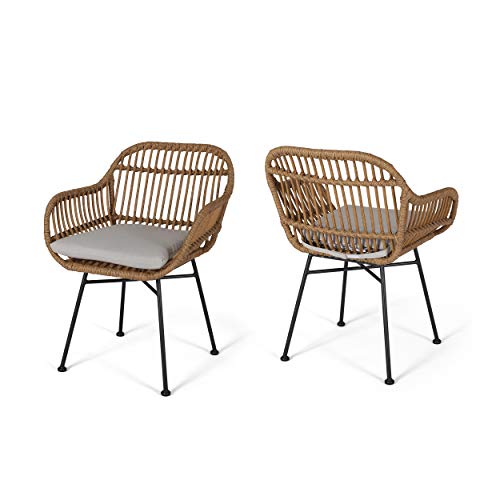There’s no hard and fast rule about mixing furniture made of different materials around your home. You’re free to pair bold colors and contrasting patterns or fabric together as much as you prefer! But for some people, it could be quite the challenge.
Making sure furniture matches gives your space a neat and cohesive look. Although there’s no harm in making striking impressions, there are ways to create a pleasing aesthetic with different materials. Try any of these coordination tips:
- Keep it proportionate: your furniture pieces should be well balanced for one another and the size of the room.
- Carefully consider colors: from walls to flooring tie in complementary colors to your furniture and accent pieces.
- Stick to one style: feature paired pieces in like styles such as all sleek, contemporary or all vintage.
Below, we’ll break down how to incorporate these tips into your unique styling and decor. Stay with us afterward for a few inspiring images to help you blend leather and fabric furniture seamlessly.
![Elegant and spacious living room with neutral tones leather furniture and fireplace, How To Mix Leather And Fabric Furniture [Including 11 Examples]](https://rulesofdesign.com/wp-content/uploads/2022/04/How-To-Mix-Leather-And-Fabric-Furniture-Including-11-Examples.png)
3 Tips To Match Leather And Fabric
Matching leather and fabric can come in even more ways than we’ve already discussed above. It all depends on your preference and judgment.
To guide you, here are three tips on how to make sure leather and fabric furniture go well together:
Keep It Proportionate
Room design proportions are all about making sure the pieces are balanced well. As long as each piece is proportionate to the rest of the furniture, the combination will likely work.
This includes checking their size, shape, build, and overall dimensions. For example, a fabric chair with narrow legs may look out of place when paired with a leather sofa with a robust frame.
At the same time, room design proportions also refer to identifying how much space each piece takes up and ensuring it does not overwhelm the rest of the room.
Carefully Consider Colors
In connection to balance and proportion, you should consider colors. You’ll need to the color of the walls and floors into account rather than just the color of your furniture.
Living room walls often use neutral or earthy tones to make room for bolder adjustments when matched with natural or brighter shades. Make sure your furniture color matches well with the wall color.
Before choosing your final colors, see to it that your colors match the textures of your furniture to keep them from looking awkward or bizarre.
Read this post if you want to know more about neutral colors for living room walls: “11 Best Neutral Colors For Living Room Walls.”
Stick To One Style
Lastly, focus on pairing pieces that come in similar styles. Although this may depend on the design you are aiming for, it is essential to choose furniture that’s identical to each other in style and vibe to make sure it will blend well.
A sleek leather sofa in black may not be the best match for a brown vintage fabric seat. Combining your pieces includes making sure they complement each other. Go for pieces that build the look and feel you want to achieve.
1. Modern Rustic Style

Incorporating leather and fabric furniture is a great way to add a touch of rustic style to your space, creating a cozy feel.
You can put earthy tones together with wooden floors and furniture. Another great tip is to choose leather couches, fabric sofas, throw pillows, and carpets in these colors.
Use accents and colors around the room to tie the room together and help make the different materials look cohesive.
2. Contemporary With A Hint Of Boho

Similar to the rustic style, a boho interior usually features earthy color schemes with a few pops of bold colors here and there.
Match a simple fabric couch with pillows of varying materials and a woven armchair with a leather seat for visual contrast.
See these woven chairs on Amazon.
Add a few more boho elements by including oranges and greens and simple tables and shelves to create a contemporary vibe.
3. Classic And Traditional

A leather seat is a common piece in classical interior styles. It usually comes in elegant colors of white and black or neutral tones.
Placing it in a room with a simple fabric couch of a similar color maintains the sophisticated look and creates balance in your interior.
It’s also a good idea to place glass furniture placed around the room to help the leather couch give off a modern feel even with traditional décor.
4. Vintage Detailing

Making a room look vintage is all about the color schemes you use. A bright mix of colors allows different furniture materials to match better, completing the ’70s look!
Take a plain fabric couch and place pillows in different materials and patterns. Consider other vintage styles such as a round coffee table, photo frames, and color schemes.
See this round table on Amazon.
Choose one primary color and center the rest of the details around it. One way is by taking a neutral shade surrounded by either warm or cool tones.
5. Layering Light Schemes

Traditional leather colors are usually dark tones. Switching it up by choosing a leather couch with a lighter color and layering it with similar shades, such as creams and whites, makes it appear more cohesive in a modern room.
Adding more accents and accessories around the room will allow light to bounce off of the different items, giving the space a brighter look and making varying materials almost unnoticeable.
6. Highlighting Accents

Varying furniture materials can lead to a cluttered-looking space, especially when there’s no harmony or focal point.
Emphasizing accent pieces instead of the overall layout can cover the difference between leather and fabric furniture.
With accents, you can concentrate on using either one large piece or a few smaller items to gather attention.
7. Style And Function

For a more practical approach, consider using different materials wherever it works best. Say, picking fabric for a sofa to increase comfort and leather for an armchair for added durability.
When these pieces are in their appropriate locations for a given purpose, it will naturally direct people towards them and make them seem less out of place.
8. Urban Monochrome

The urban monochromatic interior is great for individuals who prefer modern minimalist styles! It uses simple colors and elements, either focusing on lights or darks.
Read more about whether you should choose light or dark furniture in this post: Light Vs. Dark Living Room Furniture: What To Choose?
This approach makes it easier to blend varying materials and fabrics because it pays closer attention to maintaining a cohesive design.
In some cases, using different textures becomes the primary design factor since it adds character to simpler patterns and colors.
9. Popping Colors

On the other hand, some people lean towards more colorful and bright interior designs. When doing this, it’s crucial to understand the best way to match tones.
Colors that present too much contrast can make different items in the room stand out, which is not always the best idea for a room containing several textures.
Choose a few colors to make portions of the room pop enough to catch attention as a centerpiece. You can choose bold colors for your furniture, accent pieces, or walls and flooring.
Be sure not to go too overboard with adding pops of color to ensure everything surrounding your pieces still blend well with each other.
10. Simple Retro

Following the vintage trend, retro room concepts also tend to have traditional leather couches and chairs in dark colors.
If you’re going for this style, focus on adding extra pieces that maintain harmony with your theme. It could be a shelf, a lampshade, a carpet, or any piece of your choosing!
See this retro-style carpet on Amazon.
You can also consider adding accent pieces with retro colors and textures to give it a natural feel.
11. Neat And Elegant

You can never go wrong with a neat room design. Make sure to incorporate elegant elements to give it an even more distinct personality.
Leather furniture is popular in elegant styles. So as long as you match it with the appropriate color schemes and décor, any leather piece will blend well with different fabric items in your space!
Take the example above where two leather seats are placed across a full fabric sofa, surrounded by a few accent frames and tables complimenting the leather color while other pieces in the room provide subtle contrast.
Why Should You Match Leather And Fabric?
Other than the benefits it offers style-wise, here are a few more reasons you should try combining leather and fabric furniture:
Creating Harmony
Putting leather and fabric together is not so difficult with the right colors and styles. In fact, when you do so, it creates a pleasant harmony within the room.
Mixing them can also add an extra touch of elegance to different types of décor around your home and help blend all the items in your room together.
Promoting Comfort
In a practical sense, these materials are popular for providing great comfort. If you want to make your living room more physically comfortable, consider adding leather and fabric furniture.
They are also known for their pleasing appearance, making guests feel cozy when visiting your home.
Final Thoughts
Homeowners are free to make their own mix of colors and textures to create unique styles for their homes. Matching leather and fabric may not be common practice for some, but this is a combination beloved by many! Putting them together allows you to work with different style concepts while increasing your space’s charm and comfort.

![Elegant and spacious living room with neutral tones leather furniture and fireplace, How To Mix Leather And Fabric Furniture [Including 11 Examples]](https://rulesofdesign.com/wp-content/uploads/2022/04/Elegant-and-spacious-living-room-with-neutral-tones-leather-furniture-and-fireplace.jpg)


